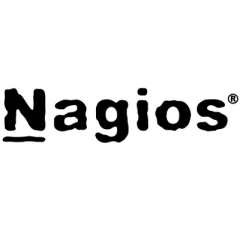Any internet based service company like
for example web hosting, DNS hosting, Email-hosting, Cloud
architectures, and even CDN networks have server's ranging from several
hundreds to thousands. There might
be different roles that are played by different servers that are
geographically isolated from each other. As a whole these geographically
separated servers might be providing a combined service to the end
customer. A particular issue or problem on any of the server should not affect the customer service, and must be found and fixed before the outage happens.
Let's
take two examples which will explain the need for a 24 x 7 monitoring
of these servers. Suppose that you get a call from your technical
support team saying that several customers are complaining about their
websites being inaccessible. Such complaints without any other details are very difficult to troubleshoot, if you do not have a 24 x 7 server monitoring in place. During crisis, you cant waste time by checking the basic below mentioned things.
- Server Disk Space
- Swap and memory utilization
- Processes and its status
- Load on the server
- RAID array status
- File system mount status
- Web server status
Because
its quite normal to miss some or the other, by manually looking for
basic issues on the server. What if the issue that was causing the
problem was simply due to a RAID drive failure, due to which one of the disks were inaccessible( which contains the document root for some websites hosted ).
Such
problems can be monitored for and can be warned before a complete
failure occurs. Another funny example would be to find that a customer
facing service was not working as desired for hours, simply due to a lag
in time from a Network Time Server.
It
is not at all feasible for a system administrator to look each and
every log, and service settings, and other configurations round the
clock. There needs to have some automated tool to continuously keep on
monitoring these required services and settings on the server, and
inform the concerned people in case of an issue. A good server and
infrastructure monitoring tool must have the following characteristics.
- Must have a web interface which clearly outlines the issues that a particular host/server has.
- Must inform different concerned people in case of an issue.
- Must send pagers, mails, and text messages to the developers and system administrators concerned with a particular service failure.
- The tool must have the capability to take actions such as restarting a service, based on the current status.
What is Nagios
Although there are many proprietary monitoring tools out there to select from depending upon the requirement, no proprietary tool can provide the peer review, source code modification, and version iterations that an open source tool provides.
Nagios is an open source network monitoring tool
that provides all those capabilities we discussed above in one package.
Nagios monitors the servers and network devices(in fact i must say any
network device which is accessible with an IP address can be monitored
using Nagios) and alerts you when a particular service that's being
monitored goes wrong, and also will alert you when the service comes
back to normal required state. Nagios is capable of doing the following
things.
- Monitoring of
different services on a server, such as SMTP, HTTP, POP, IMAP, PROXY,
and the list goes on. In fact you can make nagios to monitor anything on
the server(You just need to make a custom script according to your requirement)
- 24 x 7 monitoring of server resources like CPU, Memory, Swap, Load
- A nice web interface which indicates the status of the services by three methods OK, Warning, Critical
- Maintaining
a different set of contact groups(which will contain email addresses of
different concerned people), based on the service
In
this tutorial, we will be having a look at the major components of
Nagios, which helps nagios to complete its task of maintaining a good
monitoring infrastructure.
Let's begin
this tutorial by understanding how a nagios server checks the status of
a remote service on a remote server, and accurately report the output
to you. In the world of nagios you will too often hear a term called
plugins, which are readily available binary or small script based program, that checks the status of your required service or program.
Nagios checks the status of a remote service or program in multiple ways. Let's understand them one by one.
(1) Directly monitor services through network
In
this first method the nagios server will execute a plugin on the nagios
server itself, which will basically try to connect to a network service
on the target server. Lets understand this through the following
diagram.

In
the above shown diagram, we have tried to depict how nagios process
execute an example check(which is also sometimes called plugin), on the
nagios server itself, which will connect to the http port 80 on the
target server, and will record the response time.
Nagios
server will execute the check at regular interval(as configured), to
check the availability of the service. In the above shown example, the
plugin is placed inside the nagios server, and no changes are done at
the client side. You cant monitor all properties of a client that
counts, through this method. This method can be used only to monitor,
services that are available publicly. The main reason behind this is
that, you need to login inside the client server, in order to monitor
stuff like memory usage, process status, cpu load, and other stuff.
Hence this kind of plugins are very limited in
its capability, but you can surely achieve a considerable amount of
good 24x7 monitoring using this method, for publicly available services
like SMTP, HTTP, DNS, FTP, PORT availability check, Remote MySQL &
MSSQL etc.
(2) Nagios monitoring through SSH and NRPE
As
mentioned in the previous method, without getting a login to the remote
machine, the level of monitoring you can achieve is very limited, and
also you cannot monitor all the services using that method.
You
can achieve a 24 x 7 monitoring of the things that cannot be monitored
directly through network with the help of two different methods, they
are as mentioned below.
- Check
the status of a remote service by executing a plugin, that will be
placed on the remote client, by loging inside the client with the help
of SSH.
Related: Working of SSH explained
- NRPE
(Nagios Remote Plugin Executor), is a daemon that's installed as a
stand alone or an inetd daemon that waits for requests from the nagios
server on port 5666, to execute commands that are defined in its
configuration file.
Let's frst undersand monitoring a remote host using SSH method. In this method, a user is made on all the client machines, which allows ssh login from the nagios server with the help of a predifined ssh key and execute a requred plugin to monior a required service.

This
method of executing remote plugins on remote client with the help of
SSH is a secure way to monitor. As a normal user logs in the remote
client, the nagios server will be able to run any command that the
normal user will be able to run(when i say run, i mean execute).
the plugins that reside in the remote client are sometimes called as local plugins as they are local to the remote host. to run local plugins on remote host,nagios uses a ready made command called check_by_ssh(we will be discussing the complete command usage of this plugin in a dedicated post of its own).
of
cource you will not be sitting and entering passwords each and every
time the check is executed by the nagios daemon. Login and execution of
the remote plugin on the remote server using ssh must be seamless and
also must be password less login. For this, you need to set up public
key authentication of the user, which will be loging inside the remote
server for executing the plugins.
Now let's see the another method of executing remote plugins.
Another
method that is commonly used to achieve the successful execution of a
remote plugin is NRPE. NRPE stands for Nagios Remote Plugin Executor.
NRPE is a package that will be installed on all the remote hosts, that
needs to be monitored. Mostly NRPE is installed as Xinetd service on the
remote host, and by default it listens on the tcp port 5666.
Suppose
the nrpe daemon receives a query from the nagios server, to execute a
command on the local server, nrpe daemon looks inside the nrpe
configuration files, for a command with the same name what nagios asked
to run. Unlike ssh method, nrpe
cannot run any command that the nagios server asks to run. Commands
first need to be defined inside the nrpe configuration file. And only
those commands can be run from the nagios server. Deploying
ssh based nagios checks are much easier compared to nrpe method,
because in nrpe method, you need to first install nrpe package on all
the client servers that requires to be monitored.

Above diagram depicts the nrpe method of executing remote checks on a remote client with nagios. Nagios server has a check_nrpe plugin (which is very similar to the plugin check_by_ssh
used in ssh method), which connects to the remote client on the port
5666, and executes the command, which is given as an argument to
check_nrpe plugin(the command given as argument to check_nrpe plugin on
the nagios server must also be defined in nrpe configuration files on
the client, where the command will be executed.)
Nrpe
method of monitoring remote host, by executing plugins on the remote
machine is limited to the commands defined inside the nrpe configuration
files on the client. Which means the command which you require to run
on the remote machine, must be predefined in the nrpe configuration
files on the client.
But check_by_ssh can be used to run any command, with executable permission to the user used to login to the remote machine.
Let's go ahead and understand the remaining two methods that can be used to monitor a remote host in nagios monitoring.
(3) Monitoring remote host with the help of SNMP in nagios
SNMP
can be used to fetch the current value of different properties of a
network device or any SNMP aware device. if you have SNMP daemon
installed on your remote host, which needs to be monitored, then you can
monitor hard drive, load, etc with the help of SNMP daemon.
Advantage
behind using SNMP to monitor is because it is supported by a wide
variety of devices like network switches, routers, UPS devices etc.
We
will be doing a couple of posts on SNMP, for getting a better overview
of the protocol and its usage. We will also be doing a dedicated post
for monitoring devices with nagios and SNMP.

Above
case of monitoring with snmp places the plugin inside the nagios server
itself, which will be a generic snmp plugin that will be used to
monitor all snmap related services, with different arguments given to
it.
(4) Nagios Passive monitoring or NSCA (Nagios Service Check Acceptor)
Until
now we have seen around 4 different methods, used to monitor a remote
server using nagios. All of them worked by either a plugin placed on the
nagios server or a plugin placed on the client, or by simple monitoring
or publicly available service. In all the above mentioned method, the plugin execution or say command execution was initiated by the nagios server.
Let's
now see a method, in which the client will execute a required plugin at
a regular interval, and report the output of the execution to the
nagios server. This is achieved with the help of a daemon called NSCA.
NSCA
stands for Nagios Service Check Acceptor. This is installed as a daemon
on the nagios server itself, and it will wait for the command result
from the client.
This kind
of nagios monitoring is called as passive monitoring, because nagios
server is not the one that initates the checks on the client, but the
client will execute the plugins specified, at regular interval with the
help of a cron and report the output to the nsca daemon on the nagios
server.
While reporting the
output, the client will also send details like the service name,
hostname, the output of the command executed to the nsca daemon, so that
the nagios server can report the output exactly in the same way active
checks are executed(active checks are those checks in which the command
execution is initiated by the nagios server. Examples are check by ssh,
nrpe etc.)

There
are couple of things that needs to be understood, from the above shown
diagram. NSCA is a daemon on the nagios server that waits for the
command result from the client.
Send_nsca
is a program that can be used to send a command result to the nagios
server. The hostname, the service name, and other related details will
be included in the command result send using send_nsca to the nagios
server.
Disclosure: My company does not have a business relationship with this vendor other than being a customer.




















Hi Dima, You can add config notes in Nagios Core and comments. It's not very straight forward at the moment though. I've heard it's being revamped in coming versions though. One other thing you can do is link to a wiki if you have one internally. Thanks for sharing your experience :)